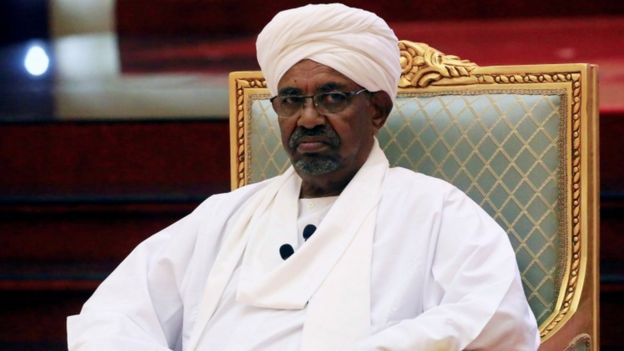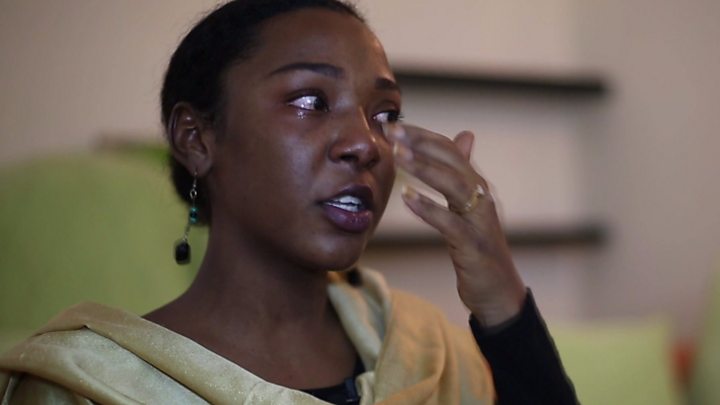Hentet fra BBC News 8.4.2019|

Bildetekst:
Protesters fled tear gas on Sunday and it was used again overnight.
Elements of Sudan’s military have acted to protect protesters in Khartoum after security forces fired tear gas to break up a mass sit-in, eyewitnesses say.
Soldiers tried to chase away pick-up trucks firing tear gas, on the second night of a sit-in protest calling for President Omar al-Bashir to resign.
Protesters sought shelter in a navy facility, a witness said, as divisions among the armed forces were laid bare.
Mr Bashir has so far refused demands to make way for a transitional government.
What happened overnight?
One protester told the BBC’s Newsday that a number of pick-up trucks arrived and began firing tear gas and live ammunition at the thousands of sit-in protesters in the Sudanese capital.
She said the military was at first neutral but then tried to chase the security forces away.
It is unclear who the security forces were but BBC Africa editor Fergal Keane says reports indicate they were from the national intelligence service and a state militia.
The eyewitness said the security forces returned for a second attack and people then ran towards a navy facility to seek shelter from the prolonged firing.
Other witnesses confirmed to Reuters news agency that soldiers had intervened.
One also spoke of crowds forcing the attackers to flee.
There are unconfirmed reports of casualties from the scene. Video on social media showed protesters hiding behind walls as shots ran out.
One resident of a district 5km (3 miles) away told Reuters the tear gas could be felt there.
How did this protest begin?
It started on Friday when protesters descended on the zone outside Sudan’s army headquarters to call for Mr Bashir’s removal.

It was the biggest protest against the president since unrest began in December and marked the 34th anniversary of the coup that overthrew the regime of former President Jaafar Nimeiri.
The demonstrators appear to be hoping for an internal coup, pleading with the army command to remove Mr Bashir, who has been in power for nearly 30 years, and open the way for a transitional government.
The police say only one person has died in the latest protests – in Omdurman, Khartoum’s twin city – but social media reports suggest at least five protesters have been killed.
Since the unrest began, Human Rights Watch says protest-related violence has killed 51 people, although officials put the figure at 32, AFP reports.
Why are people protesting?
The protests were originally sparked by a hike in the cost of living but demonstrators are now calling for the president to go.
Sudan’s economy has long been strained since the US imposed sanctions more than 20 years ago, accusing Khartoum of sponsoring terror groups.

In December, the government announced the price of fuel and bread would rise. In the year leading up to this, inflation had risen while the Sudanese pound fell rapidly in value.
Mr Bashir’s rule has been blighted by accusations of human rights abuses. In 2009 and 2010, the International Criminal Court (ICC) charged him with counts of genocide, war crimes and crimes against humanity. A warrant for his arrest has been issued.
In February, it looked like he might give in to protests and step down, but instead Mr Bashir declared a state of national emergency.
He says the protesters have legitimate grievances but should only replace him through elections.
Who are the demonstrators?
The Sudanese Professionals Association (SPA) – a collaboration of health workers and lawyers – has been organising the protests.

Doctors have emerged as a leading force and as a result are being targeted by the authorities.
It is estimated that up two thirds of the protesters are women, who say they are demonstrating against Sudan’s sexist and patriarchal society .